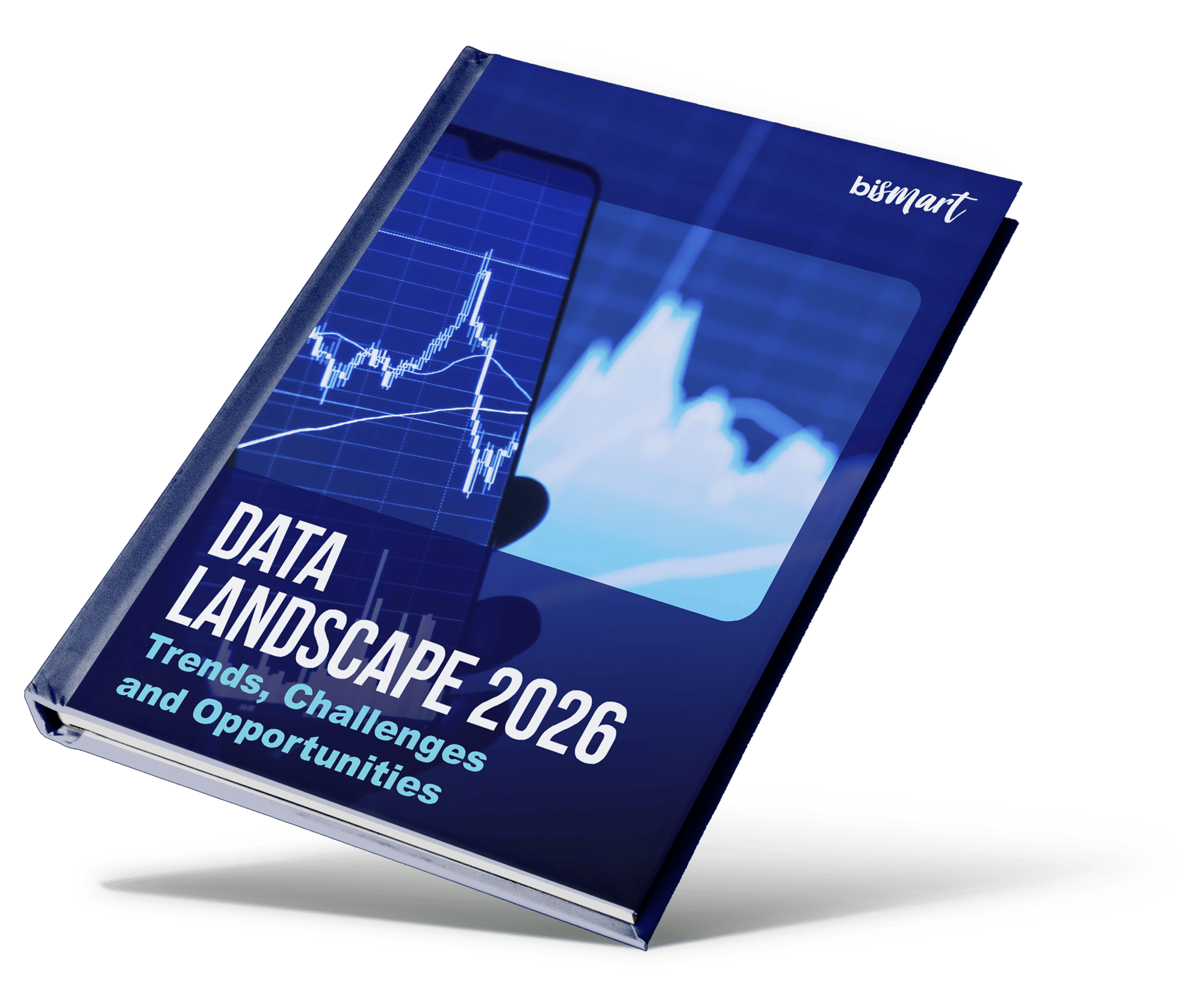Data Landscape 2026: Key Trends in Data, AI & Analytics to Future-Proof Your Strategy

▶️ Discover the 25 key data, AI and analytics trends shaping 2026
▶️ Get a clear roadmap to modernize your data strategy and drive real business impact
▶️ Anticipate technology shifts — from lakehouse to generative AI and adaptive governance
What Every Data Leader Needs to Know for 2026:
Modern Architectures, Generative AI and Real-Time Decision-Making
The pace of data innovation is accelerating. In 2026, generative AI, real-time analytics, data lakehouse and mesh architectures, and adaptive governance will reshape how organizations manage and exploit their data.
Our free e-book —Data Landscape 2026— distills the 25 most important data trends so you can make smarter investments, accelerate time-to-value, and stay competitive in an AI-driven economy.
What you’ll learn inside the report:
- The Top 25 data trends shaping 2026 — from lakehouse to data mesh and fabric.
- How to move beyond ETL/ELT into EAI (Extract, AI-process, Integrate) for smarter data pipelines.
- Practical steps to implement real-time analytics and enable decision intelligence.
- Emerging privacy & compliance tech: clean rooms, synthetic data, and policy-as-code.
- Multi-cloud & hybrid strategies to reduce cost and avoid vendor lock-in.
- A quarter-by-quarter roadmap to prioritize quick wins and long-term transformation.
The trends that will define the 2026 data landscape
Data engineering & architecture
- Streaming & event-driven pipelines for fraud, dynamic pricing and IoT.
- Lakehouse to unify scale and performance.
- Data mesh with domain-owned data products and contracts.
- DataOps automation with CI/CD, quality SLOs and self-healing pipelines.
Analytics & BI
- Self-service BI with NLQ, embedded dashboards and analytics everywhere.
- Decision Intelligence to move from insights to action.
- Semantic layer / Headless BI for governed metrics and AI agents.
Generative AI & LLMs
- Augmented analytics: auto-insights, anomaly detection and narratives.
- EAI for semantic enrichment and automation.
- Specialized LLMs, edge/on-prem options and orchestration with traceability.
Cloud & Data Platforms
- Cloud data platforms (BigQuery, Snowflake, Databricks, Synapse) converging workloads.
- Multi-cloud/hybrid for resilience, data residency and single-pane visibility.
Governance, Privacy & Trust
- Adaptive governance and policy-as-code built into the stack.
- End-to-end lineage, advanced catalogs and observability.
- Privacy tech: clean rooms, PETs, synthetic data for compliant collaboration.
Bismart tip: with Power BI, Bismart Governance for Power BI adds catalog, activity analytics and embedded governance out-of-the-box.
Who should read this report
Business leaders, CDOs/CIOs, Data & Analytics leaders, BI managers, Data Architects, Compliance and Digital Transformation teams seeking faster time-to-value with security and traceability.
- CDOs & CIOs designing the next-generation data strategy.
- Data & Analytics leaders seeking actionable roadmaps for 2026.
- BI managers needing scalable self-service and governed metrics.
- Data architects & platform owners modernizing pipelines and architectures.
- Compliance & data privacy teams adapting to new regulations and AI-driven workflows.
Why download “Data Landscape 2026”
- Prioritize your 2026 data & AI initiatives with a clear roadmap.
- Identify quick wins — self-service, semantic layer, real-time analytics.
- Reduce time-to-value and optimize cloud costs.
- Build trust & compliance into every data product.
- Gain an edge by anticipating technology shifts before your competitors.
Frequently Asked Questions
What is a data lakehouse?
A data lakehouse combines the scalability of a data lake with the governance and performance of a data warehouse, enabling unified analytics.
How is data mesh different from data fabric?
Data mesh gives ownership to domain teams through data products, while data fabric provides a unified metadata and connectivity layer across distributed data.
What is Decision Intelligence?
Decision Intelligence integrates analytics, machine learning and rules to recommend or automate business decisions with traceability and human oversight.
What does EAI (Extract, AI-process, Integrate) mean?
EAI replaces manual data transformations with AI-driven processing, enriching and integrating data in near real time.
How to start with real-time analytics?
Identify critical business events, enable streaming ingestion, implement observability, and connect actions (alerts, APIs, rules) to business outcomes.
What is adaptive governance?
Adaptive governance uses policy-as-code and automated controls embedded in platforms and pipelines, with lineage, catalogs and risk-based access.